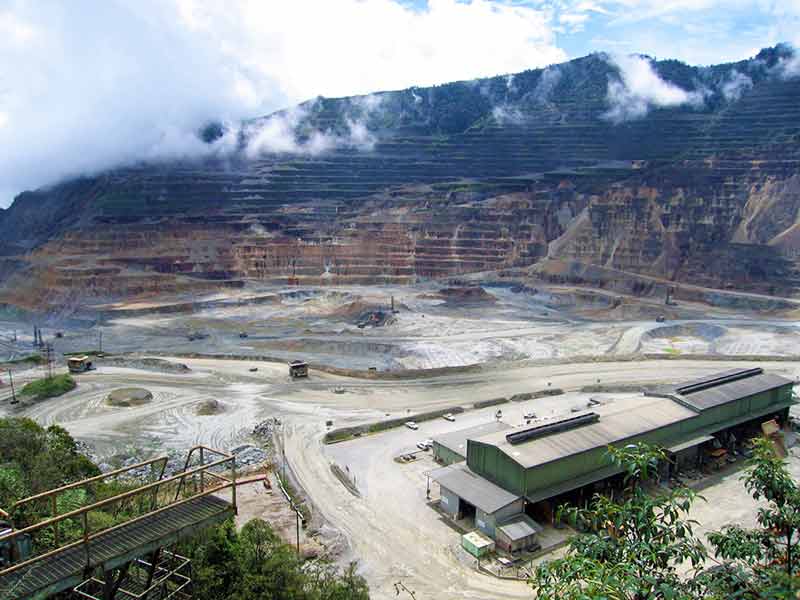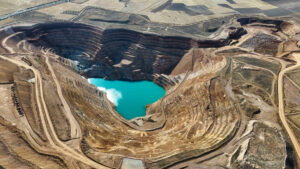PNG: a big, tier 1 mining destination that continues to draw small cap interest

Pic: John W Banagan / Stone via Getty Images
Papua New Guinea is renowned for its rich mineral endowment, evidenced by the large number of tier one copper-gold projects in-country.
A prominent example is Ok Tedi, which is the longest running open pit copper, gold and silver mine in PNG.
It has produced 4.83 million tonnes of copper, 13.8 million ounces of gold and 32.7 million ounces of silver from the start of operations in 1984 to the end of 2018.
Others include the Porgera mine which still has 19 million ounces of in-ground resources, and the advanced Freida River development project that hosts 20.5 million ounces of gold and 12.7 million tonnes of copper.
Many of these projects are located within the New Guinea Mobile Belt, formed by collision between the northward moving Australian continental plate and oceanic crust of the westward moving Pacific plate.

Gold Mountain (ASX:GMN) chief executive officer Tim Cameron told Stockhead that the top five discoveries in the country average about 20 million ounces of gold and/or 20 million tonnes of copper equivalent in global resources.
“Several of these are high grade and even the low grade porphyry copper/gold/silver/molybdenum deposits host much higher-grade shoots within associated skarn, contact and epithermal gold/quartz vein assemblages,” he said.
“The major low-grade porphyry copper/gold projects are 20 year plus mining operations, producing gross income estimated to be in excess of $0.5 billion to $1.5 billion pa with in-ground raw mineral values of up to $130 billion plus.”
PNG has also been rated by the Fraser Institute as a more attractive destination for mining investment than other well-known mining destinations such as New South Wales, Victoria, South Africa, Tanzania and Columbia.
Junior Explorers
While PNG plays host to many major miners such as Newcrest Mining (ASX:NCM) and Barrick Gold, there are also several ASX small caps searching for the next major deposit.
Gold Mountain has had an exciting start in its bid to unearth a major copper, molybdenum and gold porphyry deposit with drilling at its flagship Wabag project in the under-explored northern part of the New Guinea Mobile Belt. intersecting copper mineralisation within its first two targeted drill holes.
The first two holes at Monoyal (MCD003 and MCD004) have both intersected wide zones of Copper and Molybdenum mineralisation with intercepts of 101m at 0.14% copper from 398m and 124m @ 0.12% Copper, 105ppm molybdenum and 0.06 grams per tonne gold from 125m respectively.
MCD004 also intersected a higher grade interval of 8.4m at 0.23 per cent copper, 689ppm molybdenum and 0.4 grams per tonne gold, which is interpreted as potentially intersecting the margins of a large porphyry system.
Data from both these holes and the other holes in the current drilling program will be used to vector in to higher grade core of the system.
The Wabag project covers 2,500sqkm and was formerly held under application by BHP, which Cameron says is a strong endorsement of the area’s high potential for a copper/gold porphyry discovery.
Besides Monoyal, which is the current focus of a targeted drilling programme, the company has three other high calibre targets identified through soil sampling and trenching programs.
READ: The “irresistible” opportunity that coaxed this mining company director from retirement
$12.7m market cap Coppermoly (ASX:COY), has just upgraded resources at its Simuku project by 90 per cent to 373.6 million tonnes grading 0.31 per cent copper, 58.5 grams per tonne (g/t) molybdenum and 0.05g/t gold.
This resource remains ‘open’ to the north, both along strike and down plunge.
The company is also gearing up to carry out further exploration at its Mt Nakru project which hosts high-grade open pittable copper.
During the December 2019 quarter, the company’s trenching program uncovered substantial widths of high-grade copper and zinc mineralisation with notable results including 11m at 4.13 per cent copper and 9.04 per cent copper and 14m at 5.16 per cent zinc and 5m at 1.62 per cent zinc.
Follow up work will determine the strike length and overall dip of the mineralised package, to allow targeted drilling to occur as soon as possible in 2020.
Kingston Resources (ASX:KSN) is currently drilling its Ewatinona deposit, which is part of the Quartz Mountain region at its 2.8 million ounce Misima gold project.
The first three holes returned top results of 10.2m grading 3.68 grams per tonne (g/t) gold from 10m, which includes a high grade intersection of 1.4m at 18.58g/t gold.
Results from the two rig drilling program will underpin a resource update, ahead of the start of economic feasibility studies for the project.
READ: Tim Treadgold: The return of Misima and why Kingston is a red-hot spec
Geopacific Resources (ASX:GPR) is advancing discussions with potential debt providers to progress development of its 1.6moz Woodlark gold project.
The company has successfully executed key civil works programs on the site since raising $40m in October 2019 and is making inroads towards preparing Woodlark Island for the construction of a 2.4 million tonne per annum process plant.
This includes the relocation of a small village that is currently located on the mining lease.
Frontier Resources (ASX:FNT) is currently undertaking soil and rock sampling at the Saki prospect to assess gold bearing veins interpreted from historical soil sampling results.
This will be followed by trench sampling to expand the area of known gold mineralisation.
Drilled carried out between 2002 and 2009 had defined a 1.4km by 700m wide system of gold veins with best surface grades of 0.5 at 535g/t gold and 1m at 55.69g/t gold.
The company plans to carry out drill testing of existing gold anomalous trenches as part of planned work commitments in 2020 and to develop “mill feed” good resources ahead of recommencing mining operations at the Tolukuma mine.
Pure Minerals (ASX:PM1) recently acquired the Sewa Bay nickel project on Normanby Island from Highlands Pacific Resources.
In 2015, Highlands and its partner Sojitz Group completed a $US460,000 exploration that included auger drilling that intersected up to 6.3m at 1.12 per cent nickel from surface.
This found two main areas of mineralisation above 1 per cent nickel that cover about 7sqkm.
While Pure remains focus on importing nickel laterite ore from its supply partners in New Caledonia, the company said that Sewa Bay provides it with some risk diversification and future optionality at no initial cost outlay.
Related Topics

UNLOCK INSIGHTS
Discover the untold stories of emerging ASX stocks.
Daily news and expert analysis, it's free to subscribe.
By proceeding, you confirm you understand that we handle personal information in accordance with our Privacy Policy.








